-
 22897 Hits
22897 Hits
-
 79.78% Score
79.78% Score
-
 11 Votes
11 Votes
|
|
Route |
|---|---|
|
|
39.72540°N / 21.61950°E |
|
|
Trad Climbing |
|
|
Spring, Fall |
|
|
Half a day |
|
|
UIAA V+, 250 m |
|
|
9 |
|
|
Overview
The Pillar of Dreams (Traumpfeiler)
Traumpfeiler is the ultimate ''must'' between all Meteora classics. It's not the hardest or the longest route in Meteora, it's one of the finest, just a dream! Every climber who visit Meteora should climb this route, otherwise he cannot take the real taste of the climbing in this place.

Traumpfeiler has everything, runout slabs, offwidth, cracks, dihedral and some of the best views in Meteora. Most of the good days has at least one party climbing the route, and it's not unusual to have 4 or 5 parties in the same day. Even though it's just a UIAA V+, it is a serious route and nobody should underestimate this. Traumpfeiler (german) means ''Pillar of Dreams'' (english) and ''Pilie ton Oniron''(greek) and is the N-NE pillar of the Rock Heiliger Geist/Holy Ghost/Agio Pnevma (Ge/En/Gr).
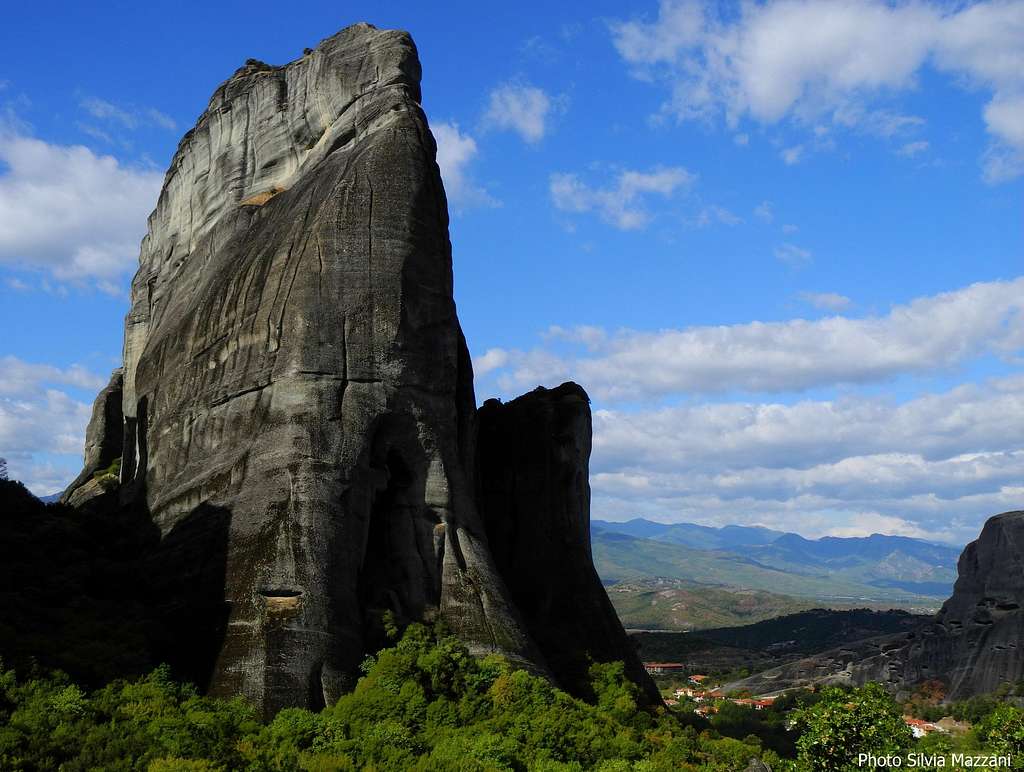
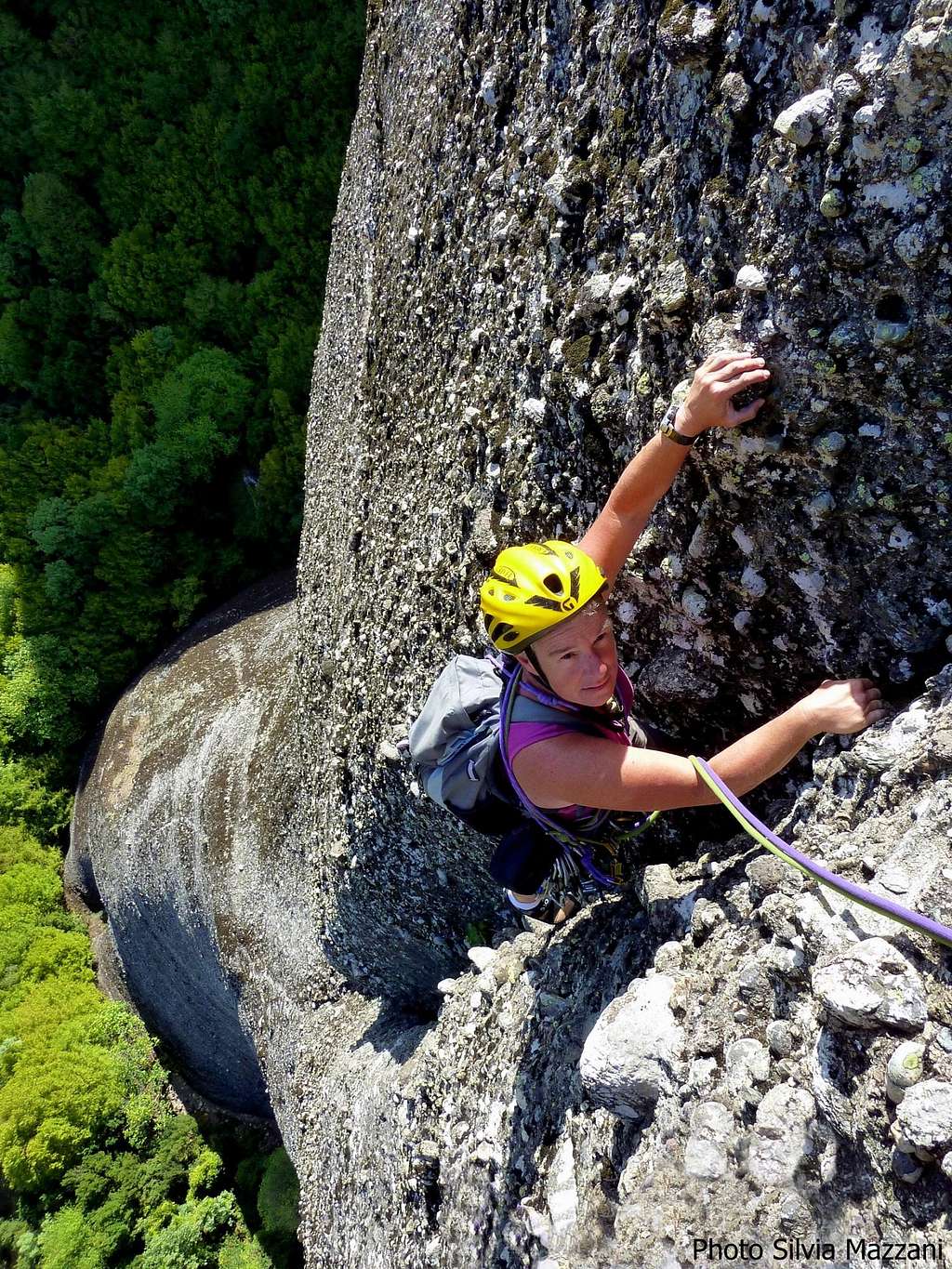
The route's first ascent was done by Heinz Lothar Stutte and Helmut Magdefrau in 21.4.1981.
Getting There
For getting to Meteora, check the Meteora page.
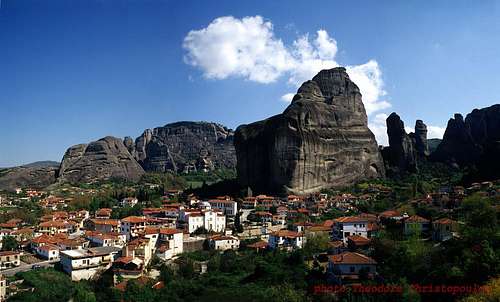
The route can be appoached:
A. from the road leading to the upper Meteora monasteries
When driving from the village of Kastraki towards North you soon see the rounded peak of the Doupianifels on the left near the road and just in front on the right the Aghion Pnéwma (recognizable for the niches with flags in the middle of its wide wall) and Heiliggeistwachter (a minor spire resting on the wall of Aghion Pnéwma). After a bend towards right, the road passes a pull-out on the left. Continue driving and reach a little pull-out just in front of the obvious mighty structure of Aghion Pnéwma. Park the car and take a path descending to the bottom of the valley, then crossing the path coming from the village. Take the left left direction to reach the wall.
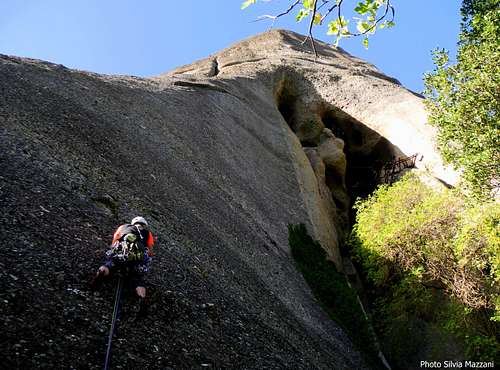
B. by walk starting from Kastraki old sector
Once in Kastraki village you can walk to the base of the route in 15 minutes. Reach the Church of Kastraki in the old part of the village. Proceed down the street towards the southwest edge of Aghion Pnéwma, continue straight down and park near a small building on your right. The trail starts behind it. The abseil of Heiliger Geist is on the S-SW side of the tower and a trail leads you back to the square. So when you finish the whole climbing you can enjoy your beers at the cafe, instead of going to take your car near the base of the route.
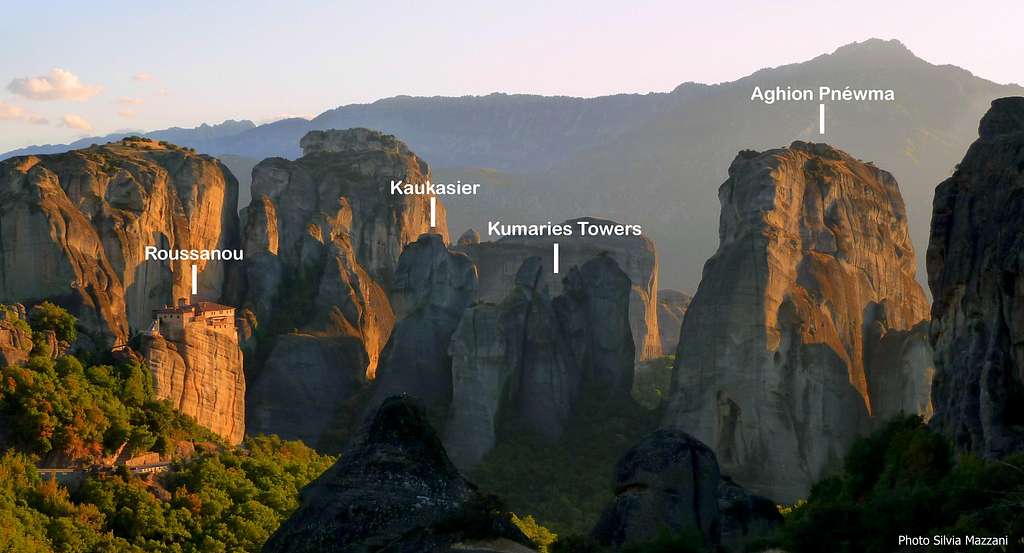
Route Description
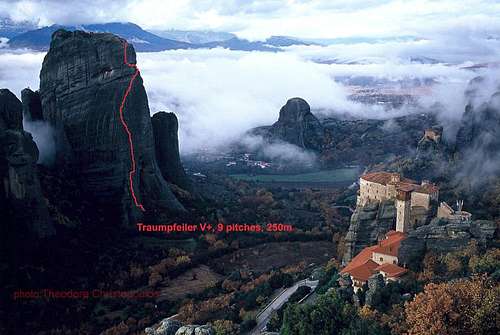
Traumpfeiler V+, 9 pitches 250 m. - H.L. Stutte, H. Magdefrau 21-4-1981
The route starts on the right side of the left pillar. The right pillar is the most serious and seldom visited route on Heiliger Geist/Holy Ghost/Aghion Pnewma. Between the two pillars exists a cave with ruins of old hermits' place. Unfortunately this wonderful classic route is affected by the nearby routes' bolting (6th and 9th pitch). That changes a little its character, but not its beauty.
Pitch 1: Climb straight up (III+) a little right of the first ring (it's 8-10m high) to narrow ''ledge'', then traverse left, clip the first ring, continue left for some meters to big stone, then up to the second ring (V+). Climb leftward to the ''ridge line''. Belay on the two rings. First pitch is 35m and has 3 bolts.
Pitch 2: Climb straight up (V) to ''ledge'', traverse right to the second belay, two rings. 35m, 3 bolts.
Pitch 3: Delicate slab climbing (V+ and 2 bolts) slightly to the right, that leads to groove/chimney (IV+). Belay on two rings, 20m. Guidebook gives 2 bolts, but now has another one in the chimney.
Pitch 4: Lefthand offwidth (V), which becomes easier dihedral as you go higher. This pitch needs some trad protection. Belay on two rings. 15m, guidebook gives no bolt, but now has one in the middle. Takes medium-large nuts and medium cams (like 0.75 to 2 Camalots).
You can climb pitches 3 and 4 together. Highly recommended.
Pitch 5: Nice face climbing to the left, with big holds (V). Belay on two rings, 15m, pitch has 2 bolts.
Pitch 6: Climb the slab (V-) with the small crack. Belay on two rings. 15m, guidebook gives use of trad protection, but now has 2 bolts on the right by a route that passes near.
Avoid climbing pitches 5 and 6 together, communication problems.
Pitch 7: Easy slab (IV-) for 40m, 3 bolts.
Pitch 8: Climb up (III+) to the belay ring of Heiliger Geist route, traverse right on the ledge to groove with 1 more bolt. Becarefull of the rope friction. Belay on the big ledge. Two bolts on the ledge. 35m, 2 bolts. Enjoy the view.
Pitch 9: Traverse left (1 ring by nearby route), to dihedral/crack (V+ with 1 bolt), then slab (V-, one more bolt) to the end of the route. Belay on two rings. Expect communication problems, so be prepared. 40m, guidebook gives 2, but actually are 3 bolts.
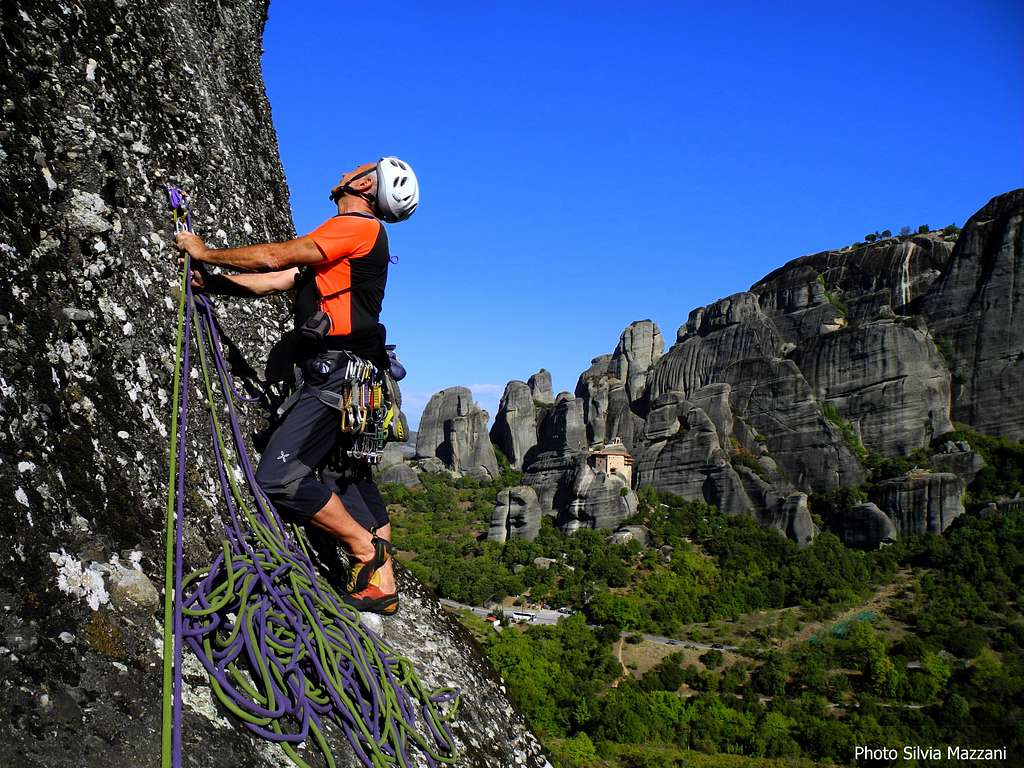
Walk all the way to the summit, log on the summitbook and continue to the village's direction (S-SW). There are stonepiles inticating the rappel position.
Descent: Make a sort (10-12m) rappel. Make 2x40m rappels to the ground. The rappel route is ''Weg des wassers'' (Route of Water).
Something very important for abseiling in Meteora is the way of putting the knot through the 'horizontal' rings. You have to put the rope with the knot (the rope for the pull) on the downside of the ring (between the ring and the rock). Otherwise maybe there is a problem, because the pulling rope is blocking the other rope, pressing it with the ring to the rock.
With the last rappel you are on the Agio Pnevma small church, right of the church is a trail that leads to the village in 10 minutes.
The time for the whole route and the descent is 4:00 to 7:00 for the most parties.
Essential Gear
For this route you need: 2x50m half/twin ropes, helmet, personal gear (harness, lockers, belay/rappel device, climbing shoes), slings and 7-10 quickdraws (depanding if you plan to climb pitches together or not), some medium/large nuts, 2 medium cams or hexes.
When to climb
All year round (snowfalls are rare) in theory, but summer and winter are not advisable because temperatures may be unpleasant. The best months are late March, April, May, September and October.
Where to stay
There is a wide choice of hotels, B&Bs, rooms for rent and an organized campsite (Camping Vrachos) in Kastraki, the village built in the shadow of the Meteora towers. There is also a smaller campsite near the tower of Doupiani.The nearby town of Kalabaka also features many accomodation choices.
Meteo
Guidebooks and maps

“Meteora – Climbing and hiking” by Dietrich Hasse and Heinz Lothar Stutte - I edition 1986, in English and German. It contains around 230 routes. Also, it provides general information about mountaineering, hiking in Meteora, maps, directions.
The second guidebook is:

“Meteora Climbing Part II” by the same Heinz Lothar Stutte and Dietrich Hasse – II edition 2000 – German, Greek and English - Note: the II edition is not a complete guidebook, but an update to the I edition
The Meteora guidebooks can be purchased in Kastraki, Taverna Paradisos or Camping Vrachos. There is also a useful map by the same authors that can be purchased in local shops in Kastraki.


